Palm Tree Leaves & Fronds White (White Spots)
White spots on palm leaves arTurning e caused by fungal infections specially scurf disease. Other possible reasons include low humidity levels, pests, lack of nutrition, unsuitably high temperatures, and lime deposits.
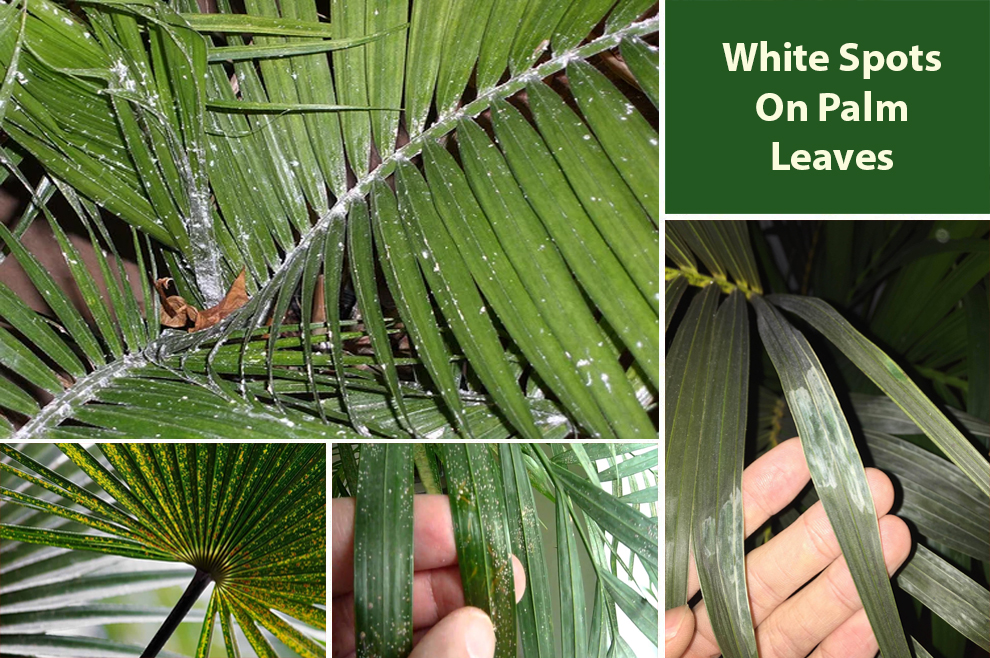
One of the most common reasons for white spots on palms is a fungal infection. Powdery mildew is one such fungus that results in a grayish or white coating on the leaves that can eventually develop into spots.
The humid conditions and poor air circulation allow the fungus to grow and spread. It spreads quickly and hence demands immediate action.
White spots on palm leaves are a prevalent problem amongst palm species like Majesty palm, Sago palm, Parlor palm, and Areca palm
Some other reasons apart from fungal infection why your palm tree leaf may have white spots include pest infestations and environmental factors like insufficient watering, low humidity, and high temperature.
Damage from harsh chemicals like pesticides or herbicides and sunburn may also cause white spots.
Regardless of the reason, you must address the problem as quickly as possible to avoid further damage.
Treatment of white spots involves applying pesticides or fungicides, improving air circulation, and altering environmental conditions like humidity and temperature.
White Spots On Palm Tree Leaves Identification
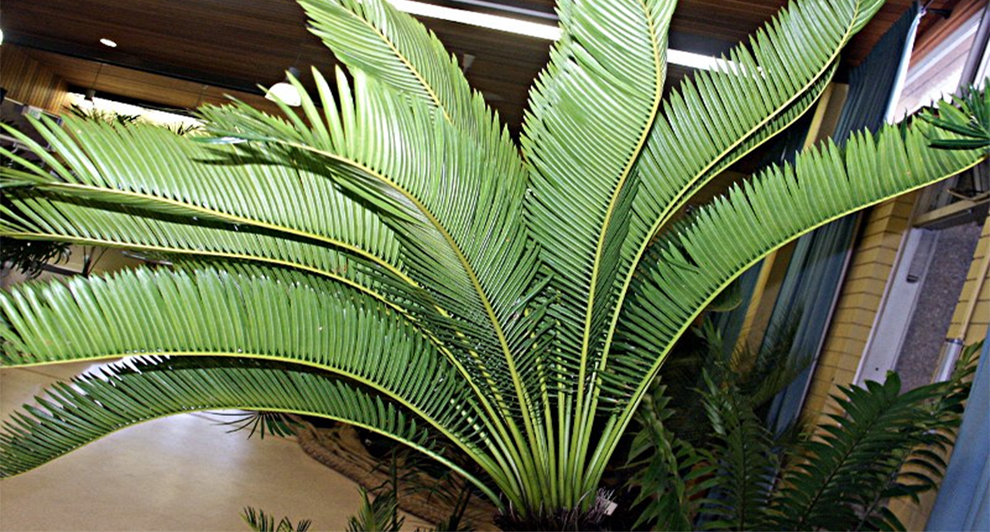
White spots on areca palm leaves and other species are typical because of environmental stress, disease, and pests. They develop spots that show as larger patches or small dots and can be brown, white, or yellow in color.
You will see Parlor palm, Sago palm, or Majesty palm leaves going white and showing other symptoms like curling, yellowing, and wilting in the leaving, indicating an underlying cause.
To understand the problem, you must examine the affected leaves closely and inspect for signs of environmental stress, fungal growth, or pests. Consult an expert or take the sample to the local nursery to identify the reasons for these spots.
Reasons For Palm Leaves Turning White
There are several reasons for the white spots on the leaves of palm trees. Below we will discuss them one by one.
A. Scurf (In some varieties)
Scurf is a prevalent fungal disease that may lead to white spots on the leaves. It primarily infects the young leaves, leaving a gray or white powdery substance formation on the leaf surface.
Scurf is an outcome of infestation by Fusicladium Dendriticum fungus that thrives in humid and warm conditions.
To combat the scurf issues, improve ventilation, apply fungicide, and alter the watering schedule.
B. Fungal Diseases
It is another reason for palm tree leaves turning white. Some of the fungal diseases that may infect the palms are:
1. Black sooty mold: Also known as the Graphiola leaf spot, the blacksmut, or the black sooty mold, this fungal disease primarily affects the date, coconut, and areca palms.
They make the palm leaves turn gray or white and are caused by Graphiola fungi species that grow on the honeydew excreted by the insects like mealybugs or scales. They leave small, black, or gray spots on the leaves that turn white as the fungus spreads.
2. Powdery mildew: This fungal disease leaves a gray or white powder-like coating on the leaves. Different fungi species may cause this, and they thrive in humid and warm conditions.
3. Leaf spot: You will see this fungal infection as irregular-shaped or circular brown or white spots on the leaves. Different fungi species may cause this and lead to the affected leaves’ death.
To address the issue and prevent the leaves from turning white, you must identify the fungi responsible for the infestation and apply fungicide to combat it. Further, improving air circulation can also help with the issue.
C. Insect Infestations
Insect infestations can also leave white spots on the leaves. Some insects that can damage palm trees and result in white spots on the leaves are:
1. Mealybugs: These insects yield a sugary, sticky substance called honeydew that can attract other pests and lead to sooty mold formation on the leaves. It can cause the leaves to turn black or white.
2. Spider mites: These insects damage the leaves by sucking the sap off the plant. It can make the leaves turn white or yellow, and they eventually drop off.
3. Scale insects: With a scale infestation, insects annex themselves to the leaves and suck the sap off the plant, causing yellow or white spots on the leaves.
To fight the infestations and avoid the white spots on palm fronds, you must identify the type of insect causing these spots and take measures like removing affected leaves, improving ventilation, and applying insecticides. Regular maintenance and inspection can also help avoid infestations from occurring in the future.
D. Nutrient Deficiencies
Nutrient deficiency may also cause the palm leaves to show white spots. Some of the prevalent nutrient deficiencies that affect palm trees are:
- Nitrogen deficiency makes the leaves turn yellow or pale, with the leaf veins remaining green. It is an outcome of inadequate nitrogen in the soil or overwatering that can rob the nitrogen from the soil.
- Magnesium deficiency can make the leaves turn white or yellow, with the edges retaining the green color. It arises from low magnesium levels in the soil or improper fertilization.
- Iron deficiency can make the leaves turn white or yellow, with the veins remaining green. It is a result of insufficient iron in the soils or alkaline soils.
- Potassium deficiency can make the edges and the tips of palm leaves turn yellow or brown, and the leaflets turn white.
- Manganese deficiency can cause brown spots on the leaves that may turn yellow or white between the veins.
To combat the nutrient deficiencies and ensure the palm leaves retain their glossy green color, you must assess the specific nutrient insufficiency and take measures like applying supplements or fertilizers that make up for the deficiency.
Further, you must ensure the soil is balanced and the palm receives ample nutrients and water. Regular feeding and soil assessment can help avoid nutrient deficiencies from occurring in the first place.
E. White Spots On Palm Leaves Due To Lime Deposits
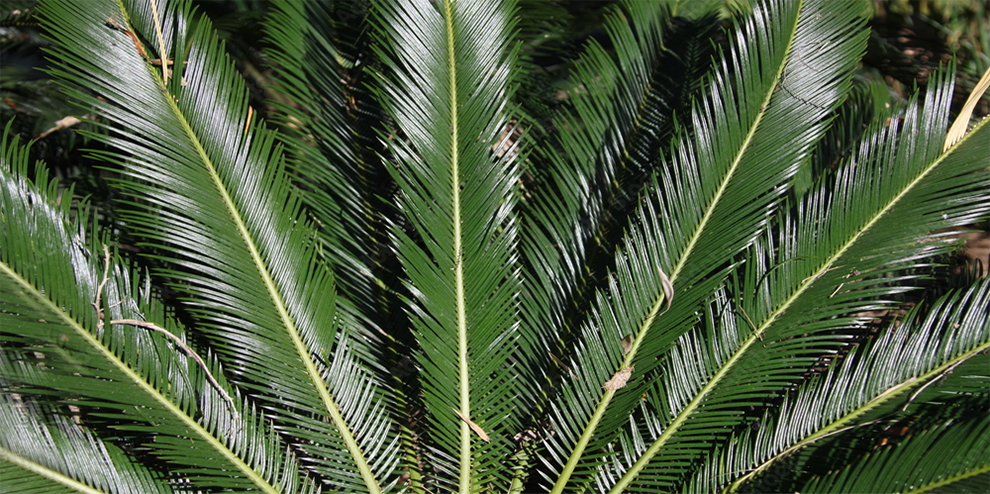
Lime deposits may also cause white spots on the palm tree leaves. These occur because of mineral buildup like magnesium and calcium in the soil or water. When the water evaporates, the minerals can be left behind on the leaf surface, resulting in gray or white spots.
To overcome this problem and prevent the leaves from turning brown, use water low in minerals and also you can add a water softener.
Further, never overwater your palm as that may lead to mineral accumulation in the soil, resulting in lime deposit formation.
However, if the lime deposits have already formed, you can remove them by wiping the affected leaves with a damp cloth or spraying them with vinegar and water mixed in equal parts.
F. Environmental Stress
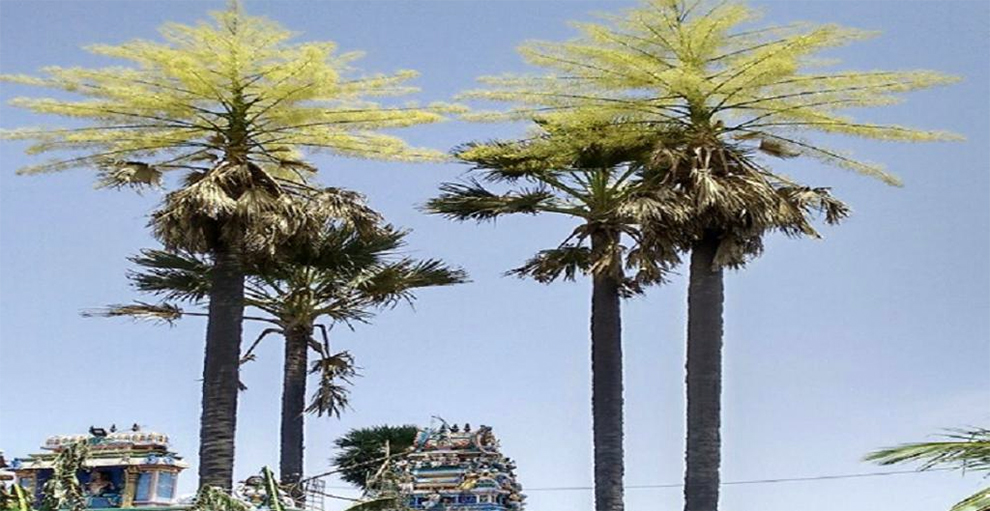
It is another reason for palm fronds turning white. Environmental stress may be an outcome of several factors:
1. Water stress: Underwatering or overwatering can cause the palm leaves to turn white. Overwatering results in waterlogged roots that change their color to white or yellow.
On the contrary, underwatering causes the leaves to dry out and change their color to brown or white.
2. Temperature stress: Extreme temperatures – cold or hot can also cause the palm leaves to turn white. It is because the palm cannot cope with the stress of extreme temperature, resulting in severe damage to the leaves.
3. Sunlight needs: Excessive or inadequate light can also cause the palm leaves to turn white. Insufficient light may turn the leaves yellow or pale, whereas excessive light can make the leaves turn white or become scorched.
To overcome the environmental stress and avoid all kinds of palm leaves from turning white, you must first identify the reason. Next, take measures like providing proper light or shade, adjusting the watering schedule, and guarding the plant against extreme temperatures.
Offering care and maintaining a healthy growing environment can also help avoid stress from occurring in the first place.
G. Care Irregularities
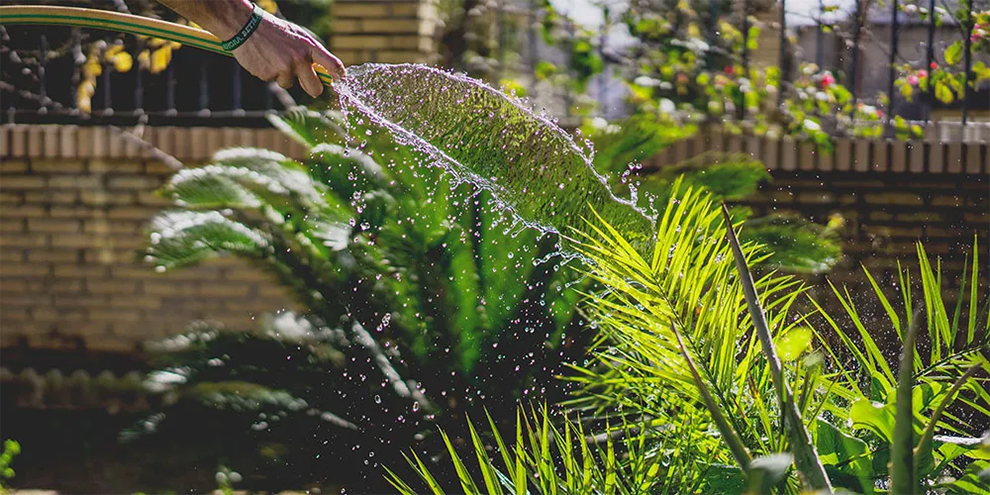
Irregularities in the care may also cause white spots on palm tree leaves. Some prevalent care irregularities responsible for this are:
1. Using hard water: When you use hard water to irrigate the palm, it can cause lime deposits to form onto the leaves, resulting in white spots. Hard water can also influence the soil pH and lead to nutrient deficiencies that can further damage the leaves.
2. Drainage issues: Poor drainage results in waterlogged roots making the leaves yellow or white. It can happen when the soil is too compacted or dense or when the drainage holes in the container or the pot are blocked.
3. Incorrect fertilization: Under or over-fertilization may also lead to yellow or white spots on the leaves. Excessive feed can cause nutrient burn, whereas too little plant food can cause nutrient deficiencies.
4. Improper pruning: It can damage the leaves and cause them to turn yellow or white.
To avoid the palm trees changing color because of these care irregularities, you must offer proper care and maintenance, including regular inspection, apt fertilizing and watering, and proper pruning. Offering good light and maintaining a healthy environment can also help avoid irregularities.
How Do You Prevent Palm Tree Leaves Turning White?
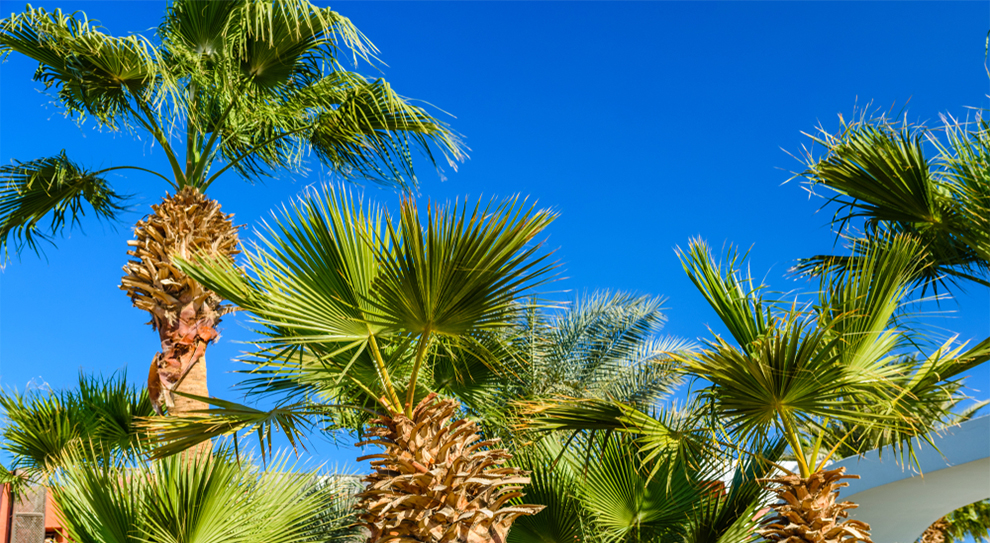
Preventing the palm from turning white demands proper care and maintenance. Here is what you need to do:
1. Watering: Give the palm tree the right amount of water only when the top soil feels dry. Overwatering can cause bacterial or fungal infections that leave white spots on the leaves, whereas underwatering may lead to nutrient deficiencies causing the leaves to turn white. Ensure the soil is moist but not waterlogged.
2. Fertilization: Palm trees require thorough fertilization to maintain good health and avoid nutrient deficiencies that may cause white spots.
3. Pruning: Regularly pruning palm trees can help avoid bacterial or fungal infections. So, remove any yellowing, damaged, or dead leaves instantly.
4. Sunlight: Palm trees need a lot of light to stay healthy and avoid white spots on the leaves. So, ensure you plant the tree where it receives ample sun.
5. Pest control: Pests like mealybugs and spider mites can damage the palm tree leaves and cause white spots. Thus, control of pests and regular inspection can help avoid infestation.
6. Avoid physical damage: Ensure that you do not subject the palm trees to any physical damage that may damage the leaves.
With these preventative measures, you can keep the palm tree healthy and avoid white spots from showing on the leaves. If you notice any signs, act quickly.
Related: How to Tell If Your Palm Is Sick and Dying|Black Spots on Palm Tree Leaves|Kentia Palm Turning Brown
How Do You Treat White Spots On Palm Trees?
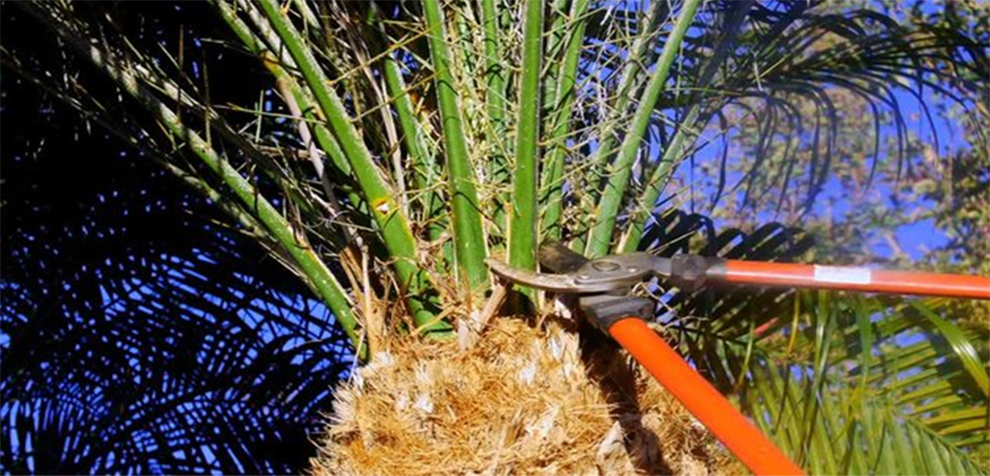
Factors like fungal or bacterial infections, physical damage, insect infestations, and nutrient deficiencies can cause the trees to develop white spots. Here is what you need to do to cure these white spots:
1. Find the cause: Before starting the treatment, determine the underlying cause. If you do not know what’s causing the problem, speak to your professional arborist or horticulturalists to identify the cause.
2. Clean the affected area: Using a soft-bristled brush, scrub away any build-up or debris on the palm tree surface. Be careful to avoid damaging the leaves or bark.
3. Apply insecticides or fungicides: Depending on the reason for the white spots, apply insecticides or fungicides to the infected area. Read the instructions carefully and wear protective clothing and gloves while handling these products.
4. Improve nutrient and soil levels: If the white spots arise from nutrient deficiency, consider improving the nutrient levels and the soil around the tree. You can use a balanced fertilizer exquisitely formulated for the palm trees and offer the plant ample light and water.
5. Prune diseased or damaged leaves: If the white spots are curtailed to only a few leaves, prune them away to avoid the problem from spreading.
Please understand treating the white spots on the palm tree can be challenging and may require some hit and trial to come to the right solution. If unsure how to proceed, consult a professional who can offer the best advice or guidance.
